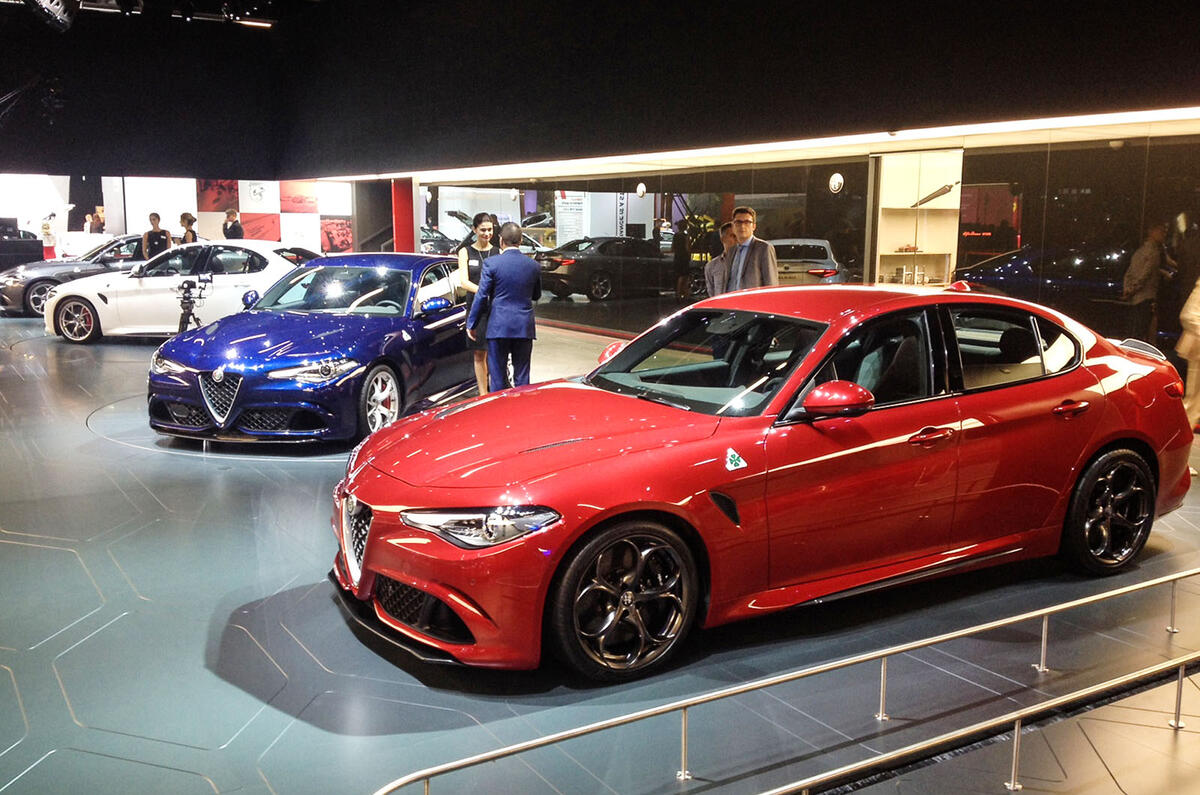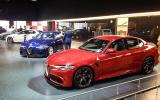The crucial new Alfa Romeo Giulia will reach the UK in September of next year, it has been confirmed. The car will spearhead Alfa's rebirth as a maker of lightweight, high-tech and sporty rear-wheel drive driver’s cars, and recently made its public debut at the Frankfurt motor show.
Read our review of the Alfa Romeo Giulia 2.2 MultiJet 180 Super
A rival to the likes of the BMW 3 Series and Mercedes C-Class, the Giulia is the first of eight new Alfas planned to launch over the next three years as part of a €5 billion investment in the 105-year-old Alfa brand.
Read our first drive of the Alfa Romeo Giulia Quadrifoglio here
Geneva 2016 update: Alfa Romeo Giulia range revealed ahead of going on sale in the UK
By the end of 2018, Alfa wants to be selling 400,000 cars a year, a six-fold increase on last year’s levels. A full relaunch in North America is part of this Alfa reboot, which Fiat Chrysler Automobiles (FCA) boss Sergio Marchionne said was only now possible due to FCA’s investment potential and global distribution network. Such a dramatic reboot, added Marchionne, was: “the only opportunity” for Alfa to prosper.
The Giulia was revealed at a special event at Alfa's refurbished Arese headquarters on the outskirts of Milan in range-topping Quadrifoglio Verde guise. A Ferrari-developed new aluminium biturbo 3.0-litre V6 engine with 503bhp powers this flagship model, something that instantly gives Alfa a full-blooded BMW M3 rival.
Alfa plans to sell the new models on their driving purity, character, charm, emotion and style under a new strapline ‘'la meccanica delle emozioni’, translating as ‘the mechanics of emotion'. Each will be built to meet a five-point criteria: innovative engines, 50/50 weight distribution, advanced technical solutions, best-in-class power-to-weight ratios, and distinctive Italian design.
Read our review of the Alfa Romeo Giulia 2.0 MultiAir
Alfa boss Harald Wester says none of its rivals are able to make cars as striking, driver-focused and emotional as Alfa intends to due to its history and strength of the brand. Indeed, he went as far as to say at the Arese unveiling that premium cars today were “boring” and lacked soul. He was also recently quoted as saying German premium models, in particular, were “cold and clinical”.
There was also an admission that Alfa’s recent models have not “respected” the brand’s past and what it stood for, so it “all needed to be rebuilt from the ground up”. “This is a complete renaissance for Alfa”, he added.





























































Join the debate
Add your comment
Cars
Launching
This 2016 edition is going to